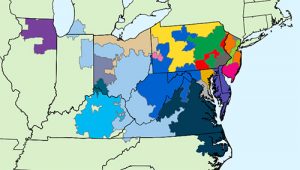OK. It never fails to be true. The Nuclear Power Industry always has “A new safer problem free” Nuclear Reactor, and it never is true. But they sold China, and I am sure they are trying with India. Look out! South America and South Africa.
China launches world’s first EPR nuclear project in Taishan
BEIJING (Reuters) – The world’s first third-generation “Evolutionary Power Reactor” (EPR) has gone into operation at Taishan in China’s Guangdong province, the French and Chinese developers behind the project announced on Friday.
The 1,750-megawatt EPR, formerly known as the “European Pressurised Reactor” and designed by France’s Areva, completed a 168-hour trial run on Thursday evening, said state-owned China General Nuclear Power Corporation (CGN).
Its commercial launch can be “a source of inspiration” for other next-generation reactors, Guo Limin, general manager of the Taishan Nuclear Power Joint Venture Company, said at a press briefing in Beijing.
World’s second EPR nuclear reactor starts work in China
A next-generation EPR nuclear reactor in China has carried out its first chain reaction, French energy giant EDF announced Wednesday, becoming the second using the much-delayed European technology to reach the milestone.
The fission reaction at the Taishan 2 reactor on Tuesday follows the Taishan 1 becoming last year the first of its kind to advance to the operational stage.
“The nuclear reaction was authorised and yesterday the Chinese reactor carried out a fission reaction for the first time,” EDF chairman and CEO Jean-Bernard Levy told Europe 1 radio on Wednesday.
As a side note, if you are interested in a Guide To Solar Power, the replacement for nukes. Please look here.
https://www.flexible-solar-panel.com/the-ultimate-guide-to-solar-energy/
:}
Go to all of those places and read. More next week.
:}

